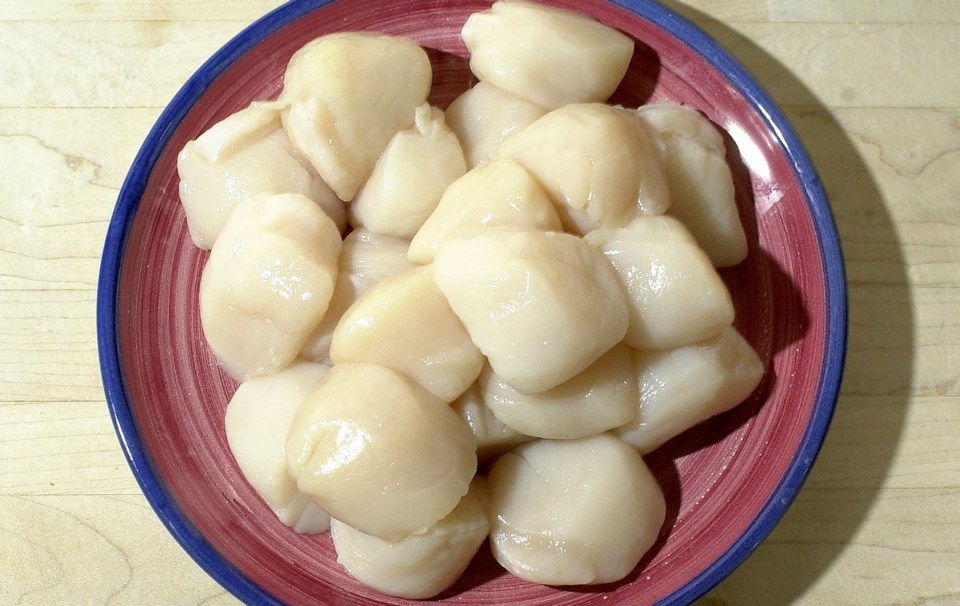Ten million scallops that have died in the waters near Qualicum Beach due to rising ocean acidity are the latest victims in a series of marine die-offs that have plagued the West Coast for 10 years.
Human-caused carbon dioxide emissions in the atmosphere are being absorbed by the ocean and may have pushed local waters through a “tipping point” of acidity beyond which shellfish cannot survive, said Chris Harley, a marine ecologist at the University of B.C.
Rising ocean acidity is a global phenomenon, made worse by higher natural acidity in local waters, Harley said.
“I’ve seen pH measured down to about 7.2, so this is very much within the realm of possibility, though unfortunate and extreme,” he said. “We are in a hot spot in the Pacific Northwest.”
The lower the pH, the higher the acidity. Local waters are typically a much-less-acidic 8.2. High acidity interferes with the ability of baby scallops to form a protective shell, forcing them to expend more energy and making them more vulnerable to predators and infection.
“When the pH goes down, it’s a lot harder to build that shell, and we’ve seen that in a lot of other species in the lab,” said Harley. “It interferes with everything they do, their basic physiology is affected.”
The problem has led Nanaimo-based Island Scallops to shut down its processing plant and lay off 10 people, almost one third of its workforce. The company is a marine hatchery and scallop producer, with more than 500 hectares in production.
That’s about 16 per cent of B.C.’s total shellfish culture.
Acidity and carbon dioxide concentrations are measured daily at the hatchery and in the ocean, said Island Scallops CEO Rob Saunders.
“In 2009, we started to notice significant problems in the hatchery and when we communicated with hatcheries in Washington, they were seeing the same thing,” he said.
“Suddenly, we were getting these low pH values. pH has been so stable that for a lot of years no one bothered to measure it, because it never changed. It was really startling.”
Scallop operations, big and small, are reporting die-offs this year. Mysterious scallop die-offs have also been reported in China since 1996.
Oyster die-offs in Washington state and Oregon dating back a decade have also been linked by National Oceanic and Atmospheric Administration researchers to acidification and rising carbon dioxide levels.
Oyster larvae started dying inexplicably in 2005. Researchers found that deep water welling up from the depths of the ocean was mixing with surface water rich in carbon dioxide from the atmosphere, rendering the water uninhabitable to some shellfish.
Atmospheric carbon dioxide passed 400 parts per million in the Earth’s atmosphere, according to recent measurements taken at the Mauna Loa Observatory. That’s up from 280 ppm in the pre-industrial era.
It’s a phenomenon that Saunders has also noticed.
Carbon dioxide concentrations that had been stable for as long as records were kept started to climb and, rather than correcting, they stayed high. By 2011, concentrations were verging on double the normal range, he said.
“No one — not even the researchers — expected the situation to decline this rapidly,” Saunders said.
An audit of Island Scallops’ facilities early in 2013 counted three million scallops seeded in 2010 and seven million from 2011.
“We started gearing up for processing,” he said.
But the animals started to die soon after and by July, mortality hit 95 to 100 per cent. Other local growers faced the same fate.
The B.C. Shellfish Growers Association is asking Fisheries and Oceans Canada to take part in a study with B.C. growers to work out potential solutions to the problem.
Growers have been forced to artificially increase the pH of the water entering hatcheries to protect larvae, but that is little help to the shellfish once they reach the ocean.
“Increasingly, the acidic ocean is having an effect on survival and growth of shellfish during grow out in the ocean,” according to the industry association.
“For example, in 2010, 2011 and 2012, a number of scallop farmers experienced heavy mortality in every year class exhibiting the following: varying signs of shell deformation; problems with shell deposition (darkening of inside of shell); weak or brittle shells. In 2013, mortalities reached 90 per cent in all earlier year classes.”



